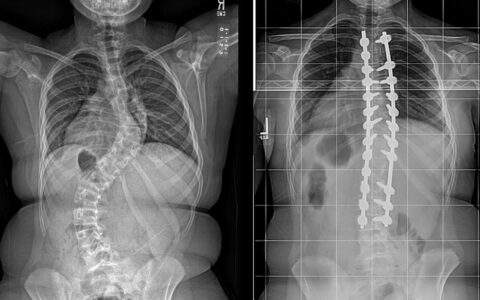Aseptic loosening after primary total knee arthroplasty (TKA) is recognized as the most common cause of long-term failure, contributing to an estimated 25 percent of knee revisions. Yet, the mechanisms of failure are not well understood.
A research team led by Ryan Martin, M.D., an associate professor of orthopaedic surgery at Vanderbilt University Medical Center, has begun to differentiate these conditions by characterizing the impact of knee movement during the cementing process.
The team recently presented its research at the American Academy of Orthopaedic Surgeons Annual Meeting. On the basis of this innovative work, they were awarded the 2022 Knee Society Chitranjan S. Ranawat Award.
Motion and Implant Fixation
“We hypothesized that moving the knee while the cement was curing would dissipate lipids through the implant-cement interface and weaken implant fixation,” Martin said.
To test their hypothesis, the researchers used a cadaveric implant fixation model and examined the influence of cementing tactics and implant factors.
In the study, four contemporary TKA designs were evaluated, after which each design was randomly assigned to a cadaveric specimen pair with side-to-side randomization.
“For each specimen, we tested the effect of motion on axial tibial pull-out strength, and also performed an interface failure examination,” Martin said.
“Knee motion during cement polymerization was associated with significant reduction in tibial implant fixational strength.”
The researchers found that, overall, the no-motion cohort had a significantly higher average pull-out strength than the motion cohort, additionally, individual results from the no-motion cohort members varied based on implant design.
Focusing on Technique
While most patients recover quickly after TKA surgery, revisions are sometimes required for those with persistent pain or who express dissatisfaction with the results.
Martin points out that most prior studies have concentrated on risk-factors associated with failure. In this case, the researchers focused on cementing techniques and implant factors – making the results novel and compelling.
“This was one of the first studies to demonstrate a significant reduction in initial implant fixation caused by motion during the curing phase of cementation,” he said.
Because there is no standardized cementing technique for primary total knee replacement, several steps within the cementing process also may be implicated in a failure, including the timing of application, use of pulsatile lavage or tourniquet, and the type and viscosity of cement.
“It is possible that other variables may also be associated with implant fixation,” Martin said. “We chose to assess motion during the curing phase of cementing and noted differences with this single variable.”
Future Directions
For now, Martin and his team recommend limiting motion while cementing the tibial implant to improve fixation strength, irrespective of TKA design.
Martin expects that future investigations will build upon these findings using a wider selection of samples.
“Future studies could potentially mirror our efforts and incorporate additional manufacturers to help further generalize our results,” he said.





